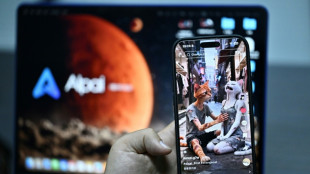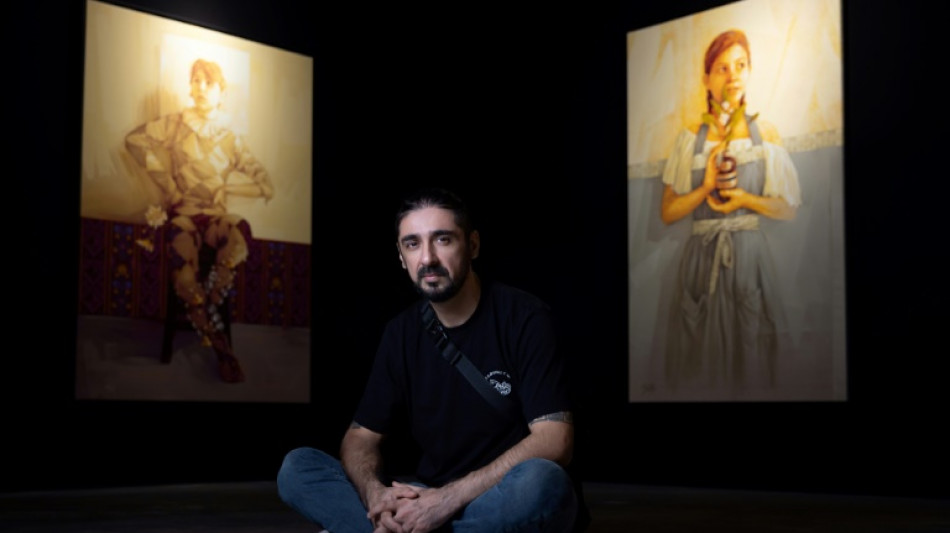
-
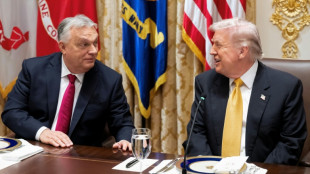 Hungary's Orban wins Russian oil sanctions exemption from Trump
Hungary's Orban wins Russian oil sanctions exemption from Trump
-
More than 1,000 flights cut in US shutdown fallout
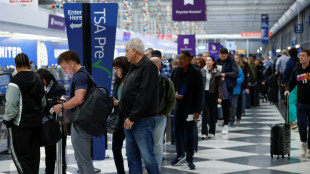
-
 Turkey issues genocide arrest warrant against Netanyahu
Turkey issues genocide arrest warrant against Netanyahu
-
Countries agree to end mercury tooth fillings by 2034

-
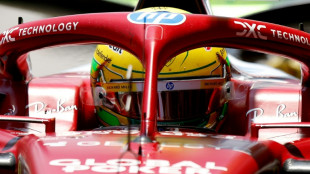 Hamilton faces stewards after more frustration
Hamilton faces stewards after more frustration
-
World's tallest teen Rioux sets US college basketball mark

-
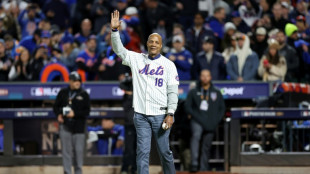 Trump pardons three-time World Series champ Strawberry
Trump pardons three-time World Series champ Strawberry
-
Worries over AI spending, US government shutdown pressure stocks
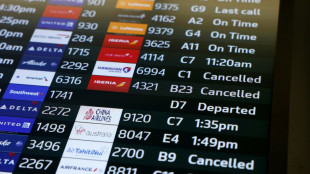
-
 Verstappen suffers setback in push for fifth title
Verstappen suffers setback in push for fifth title
-
Earth cannot 'sustain' intensive fossil fuel use, Lula tells COP30

-
 Wales boss Tandy expects Rees-Zammit to make bench impact against the Pumas
Wales boss Tandy expects Rees-Zammit to make bench impact against the Pumas
-
James Watson, Nobel prize-winning DNA pioneer, dead at 97

-
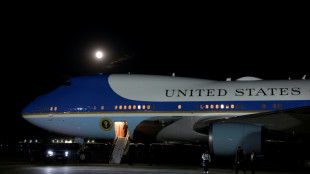 Medical all-clear after anti-Trump package opened at US base
Medical all-clear after anti-Trump package opened at US base
-
Sabalenka beats Anisimova in pulsating WTA Finals semi

-
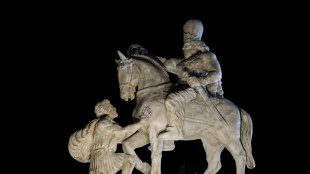 Iran unveils monument to ancient victory in show of post-war defiance
Iran unveils monument to ancient victory in show of post-war defiance
-
MLS Revolution name Mitrovic as hew head coach

-
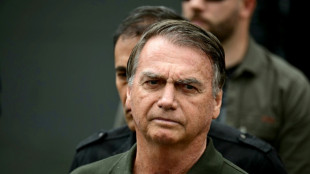 Brazil court reaches majority to reject Bolsonaro appeal against jail term
Brazil court reaches majority to reject Bolsonaro appeal against jail term
-
Norris grabs pole for Brazilian Grand Prix sprint race
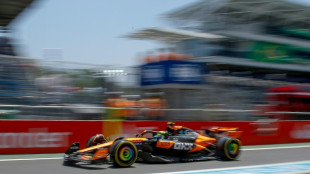
-
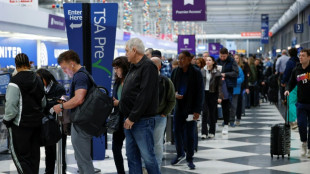 More than 1,200 flights cut across US in govt paralysis
More than 1,200 flights cut across US in govt paralysis
-
NFL Cowboys mourn death of defensive end Kneeland at 24

-
 At COP30, nations target the jet set with luxury flight tax
At COP30, nations target the jet set with luxury flight tax
-
Trump hosts Hungary's Orban, eyes Russian oil sanctions carve-out
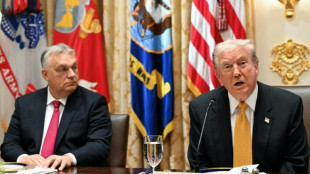
-
 All Blacks 'on edge' to preserve unbeaten Scotland run, says Savea
All Blacks 'on edge' to preserve unbeaten Scotland run, says Savea
-
Alpine say Colapinto contract about talent not money
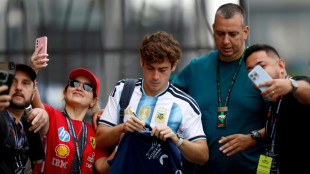
-
 Return of centuries-old manuscripts key to France-Mexico talks
Return of centuries-old manuscripts key to France-Mexico talks
-
Byrne adamant Fiji no longer overawed by England

-
 Ex-footballer Barton guilty over 'grossly offensive' X posts
Ex-footballer Barton guilty over 'grossly offensive' X posts
-
Key nominees for the 2026 Grammy Awards

-
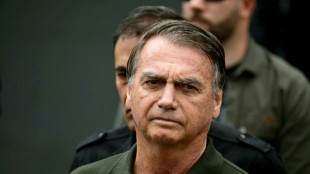 Brazil court mulls Bolsonaro appeal against jail term
Brazil court mulls Bolsonaro appeal against jail term
-
Rybakina sinks Pegula to reach WTA Finals title match
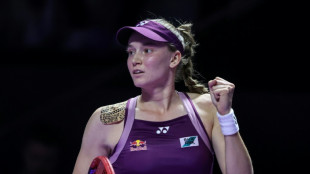
-
 Earth 'can no longer sustain' intensive fossil fuel use, Lula tells COP30
Earth 'can no longer sustain' intensive fossil fuel use, Lula tells COP30
-
Kendrick Lamar leads Grammy noms with nine
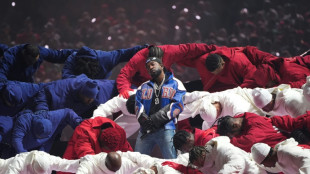
-
 Ex-British soldier fights extradition over Kenyan woman's murder
Ex-British soldier fights extradition over Kenyan woman's murder
-
Kolisi to hit Test century with his children watching

-
 Alex Marquez fastest in practice ahead of Portuguese MotoGP
Alex Marquez fastest in practice ahead of Portuguese MotoGP
-
Will 'war profiteer' Norway come to Ukraine's financial rescue?
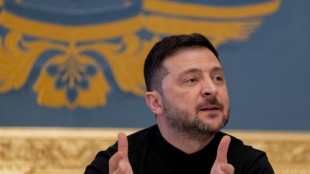
-
 Tech selloff drags stocks down on AI bubble fears
Tech selloff drags stocks down on AI bubble fears
-
Blasts at Indonesia school mosque injure more than 50
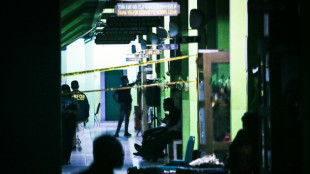
-
 Contepomi says lead-in to Wales match a 'challenge' for Argentina
Contepomi says lead-in to Wales match a 'challenge' for Argentina
-
Greece woos US energy deals, as eco groups cry foul

-
 Frank says Spurs supporting Udogie through 'terrible situation'
Frank says Spurs supporting Udogie through 'terrible situation'
-
MSF warns of missing civilians in Sudan's El-Fasher

-
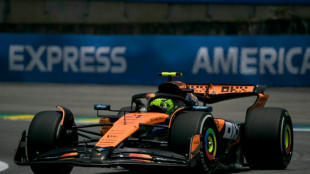 Norris on top as McLaren dominate opening Sao Paulo practice
Norris on top as McLaren dominate opening Sao Paulo practice
-
UN warns 'intensified hostilities' ahead in Sudan despite RSF backing truce plan

-
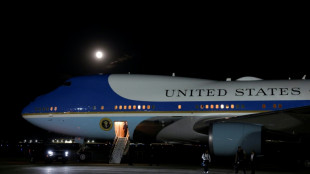 Seven hospitalized after suspicious package opened at US base
Seven hospitalized after suspicious package opened at US base
-
Guardiola says 'numbers are insane' as he reaches 1,000 games in charge

-
 Brazil welcomes China lift of ban on poultry imports
Brazil welcomes China lift of ban on poultry imports
-
Scotland captain Tuipulotu bids for landmark win over All Blacks

-
 Woman convicted in UK of harassing Maddie McCann's parents
Woman convicted in UK of harassing Maddie McCann's parents
-
Tanzania charges more than 100 with treason over election protests


Does street art belong in a museum?
Invaders in the Petit Palais: some 60 of the world's most renowned street artists have been invited into the rarefied confines of a Paris institution, even if some admit it raises questions about whether they belong.
The Beaux-Arts palace on the banks of the Seine houses an illustrious selection of 19th-century painting and sculpture.
But the "We Are Here" exhibition sees the street artists infiltrate it with graffiti, murals and graphics dotted among the portraits -- even adding cartoon wings to statues.
Some merge almost too well -- a freshly made portrait by Tunisian artist DaBro looks perfectly at home in a cluster of solemn 19th-century street scenes until you realise it features break-dancers.
Others are more jarring, such as the pixelated alien by the French artist Invader sitting above a Monet sunset.
It is, say some of the artists, a logical step.
"Street art always has the spirit of invasion. We always want to take over spaces that are not open to us," said Inti, a Chilean artist who provided a huge mural.
But the exhibition has also made him question himself, he told AFP: "To enter into a closed space like this is to enter into an institution -- it's a bit counter to what we try to do outside."
He was concerned, too, that street art has become too commercialised, undermining its rebellious spirit.
A painting by US artist Jean-Michel Basquiat, who started out in street art before moving into galleries, sold for $110 million in 2017; a shredded artwork by Britain's guerilla street artist Banksy went for $25 million in 2021.
Hush, a street artist from the north of England, agrees that art movements die when they become too accepted by the establishment.
But its ethos still challenges the elitist atmosphere of galleries, he said.
"As a working-class guy, you don't always feel accepted in art museums. With street art, everyone feels allowed to come in," he told AFP.
"And you can still be disruptive, you can still have fun. The good thing with being from this scene is you don't feel like you have to say yes. It means we're still in control."
- 'Buried underground' -
One of the first items to strike visitors is a giant aerosol can emerging out of the ground with cartoon wings, courtesy of London-based artist D*Face.
"It represents the fact that we've been buried underground and often overlooked and now we're coming up to be seen," he said.
The timing is right, he added, with France plunged into political turmoil this week by a far-right landslide in European elections.
"Urban art is really the first global art movement. You go anywhere in the world and there is a street art community," said D*Face.
"It's all about inclusivity, whereas politics right now is trying to divide us."
Also present is Shepard Fairey, aka Obey, renowned for his "Hope" posters for Barack Obama's presidential campaign.
His "Liberty, Equality, Brotherhood" shows French figurehead Marianne with a blood-red tear running down her cheek, made in response to terrorist attacks in Paris in 2015.
"The thing I love about street art is that it brings people together, it's got a generous spirit," he said. "Anything that makes people think about their common humanity rather than selfish protectionism is very valuable for this moment."
But can street art maintain that political relevance if it becomes too accepted by the elite?
"We've been saying street art is dead since its inception and it has kept evolving," said Hush.
"But it has come full circle. Street art was against the people who could say yes or no.
"And now they say yes to us."
Q.Najjar--SF-PST

